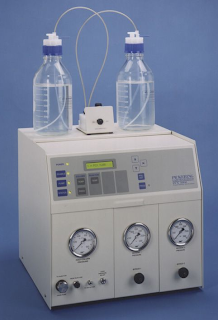We have discontinued the CRX-400 as of January 1, 2013. For future sales, our current post-column systems, the Pinnacle PCX and Vector PCX are specifically designed for HPLC post-column applications and will work with any HPLC.
Current CRX-400 users will now need to purchase replacement Vector heated reactors when replacing a clogged or broken heated reactor. Listed below are the appropriate part numbers for these replacements.
Vector Replacement Heated Reactors:
PN 1452-0160 Reactor Heater and Coil Assembly, 0.15ml, 120V
PN 1452-0161 Reactor Heater and Coil Assembly, 0.15ml, 240V
PN 1452-0162 Reactor Heater and Coil Assembly, 0.5ml, 120V
PN 1452-0163 Reactor Heater and Coil Assembly, 0.5ml, 240V
PN 1452-0325 Reactor Heater and Knitted Assembly, 1.0ml, 120V
PN 1452-0326 Reactor Heater and Knitted Assembly, 1.0ml, 240V
PN 1452-0166 Reactor Heater and Knitted Assembly, 1.4ml, 120V
PN 1452-0167 Reactor Heater and Knitted Assembly, 1.4ml, 240V
PN 1452-0168 Reactor Heater and Knitted Assembly, 2.0ml, 120V
PN 1452-0169 Reactor Heater and Knitted Assembly, 2.0ml, 240V
PN 1452-0170 Reactor Heater and Knitted Assembly, 2.8ml, 120V
PN 1452-0171 Reactor Heater and Knitted Assembly, 2.8ml, 240V
PN 1452-0172 Reactor Heater and Knitted Assembly, 3.0ml, 120V
PN 1452-0173 Reactor Heater and Knitted Assembly, 3.0ml, 240V
PN 1452-0223 Reactor Heater and Knitted Assembly, 3.5ml, 120V
PN 1452-0224 Reactor Heater and Knitted Assembly, 3.5ml, 240V
PN 1452-0174 Reactor Heater and Knitted Assembly, 1.2 & 1.6ml, 120V
PN 1452-0175 Reactor Heater and Knitted Assembly, 1.2 & 1.6ml, 240V
PN 1100-0281 Coil Assembly, 0.5ml without electronics
PN 1100-0283 Knitted Assembly, 1.0ml without electronics
Please contact Technical Support at support@pickeringlabs.com, (800)654-3330, or (650)694-6700 with any questions.
David Mazawa
Technical Support Chemist











